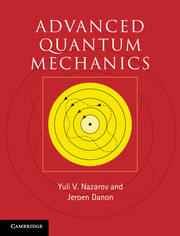4 - Magnetism
from Part II - Examples
Published online by Cambridge University Press: 05 February 2013
Summary
In this chapter (summarized in Table 4.1) we present a simple model to describe the phenomenon of magnetism in metals. Magnetism is explained by spin ordering: the spins and thus magnetic moments of particles in the material tend to line up. This means that one of the spin projections is favored over another, which would be natural if an external magnetic field is applied. Without the field, both spin projections have the same Zeeman energy, and we would expect the same numbers of particles with opposite spin, and thus a zero total magnetic moment. Magnetism must thus have a slightly more complicated origin than just an energy difference between spin states.
As we have already seen in Chapter 1, interaction between the spins of particles can lead to an energy splitting between parallel and anti-parallel spin states. A reasonable guess is thus that the interactions between spin-carrying particles are responsible for magnetism. The conduction electrons in a metal can move relatively freely and thus collide and interact with each other frequently. Let us thus suppose that magnetism originates from the interaction between these conduction electrons.
We first introduce a model describing the conduction electrons as non-interacting free particles. Within this framework we then propose a simple wave function which can describe a magnetic state in the metal. We then include the Coulomb interaction between the electrons in the model, and investigate what this does with the energy of our trial wave function.
- Type
- Chapter
- Information
- Advanced Quantum MechanicsA Practical Guide, pp. 90 - 112Publisher: Cambridge University PressPrint publication year: 2013

